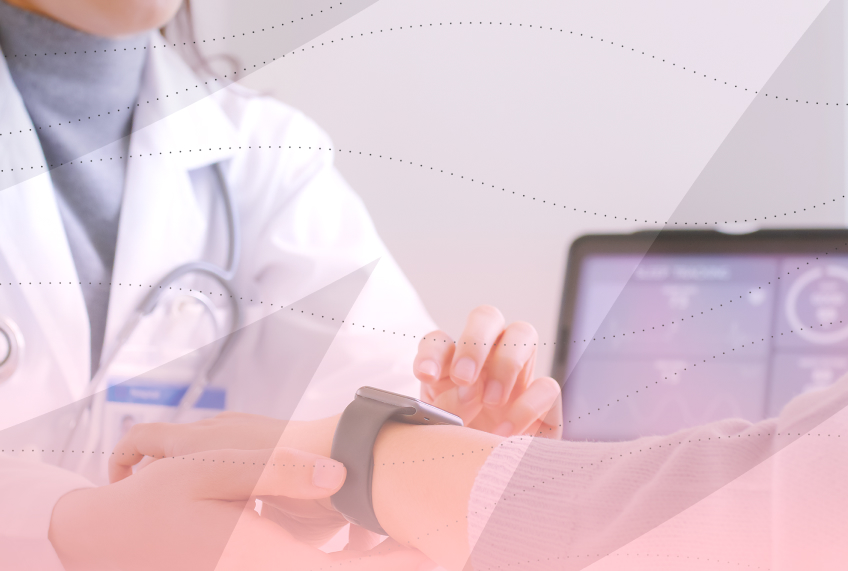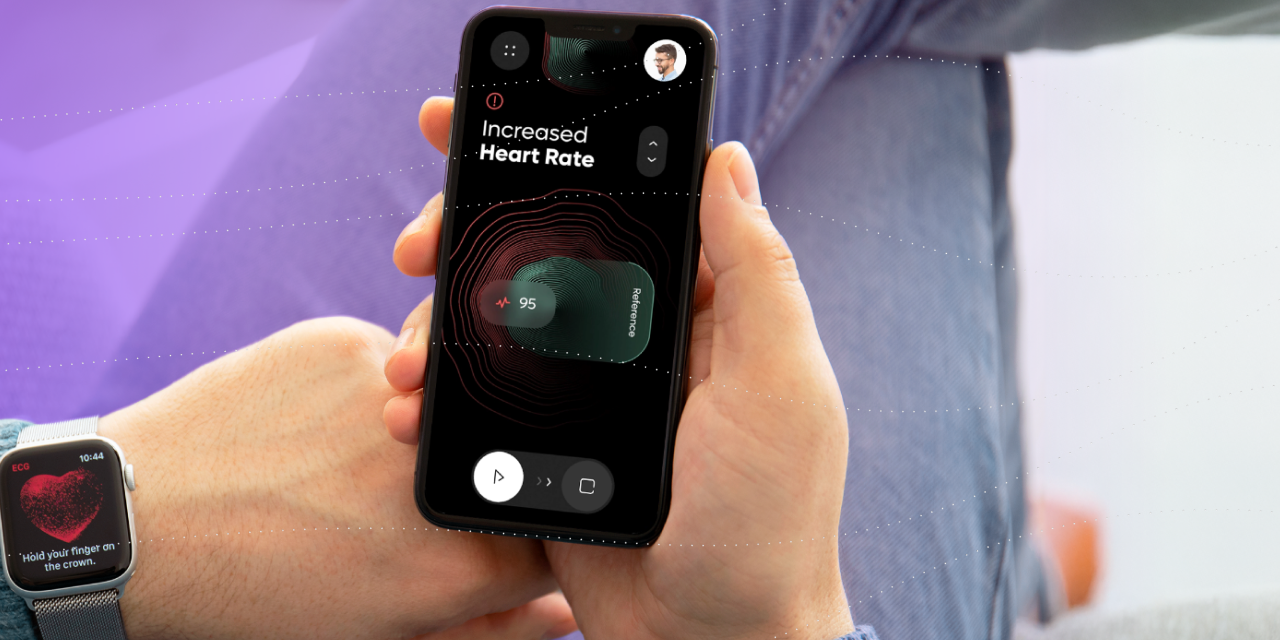Digital Biomarkers: The 3 Most Promising Areas for Validation

Have you ever wondered how doctors identify your illness? Apart from symptoms and other manifestations of a specific disease, there are measurable biological indicators that change when you're ill. These are called biomarkers. High blood glucose might indicate diabetes, elevated cardiotrophin-1 levels could signal heart dysfunction, and various molecules in your blood can point to different conditions. These are all examples of biomarkers.
Traditionally, these measurements were only available through diagnostic laboratories and clinics. But what if you could monitor some of these indicators at home, at any time? When your smartwatch measures your heart rate or tracks your oxygen saturation, it's capturing digital measurements of biological processes. This is what we call digital biomarkers.
Unlike traditional medical measurements, digital biomarkers can continuously monitor our bodies in real-world settings. This way they provide extensive data about our health status and responses to treatments. Today, with a market valuation of 1.5-1.9B USD and growing at 32-36% until 2030, the field includes more than 1,200 market players offering over 1,400 types of measurements. But before these digital biomarkers can be trusted in healthcare, they must undergo rigorous validation. In this article, we'll explore how digital biomarkers are validated to ensure their reliability in three crucial healthcare applications.
Digital biomarkers have become really important for healthcare….
Here are the validation processes
Digital biomarkers, as you might guess from the morphology of the term, are powered by digital health technologies (DHT). They present a unique challenge as their biological signals are tightly coupled with the measurement technology itself. And guess what - in order to be confident they are reliable, need to go through a validation process.
The validation journey for digital biomarkers centers on two essential paths. First, analytical validation ensures that the measurement method consistently replicates what it's intended to measure. For example, developers and other professionals involved in a project need to confirm that a smartwatch will accurately measure your heart rate under various conditions. This process examines the quality of data collected by the device and the reliability of its algorithms.
Clinical validation forms the second crucial path. This process verifies that the biomarker can effectively measure or predict relevant clinical outcomes. It is a vital step because it establishes the link between digital measurements and meaningful health insights that can inform medical decisions.
When digital biomarkers are used in a medical context to diagnose, treat, or prevent disease, they are considered medical devices. This is why they must undergo a regulatory assessment. Medical devices are approved for use under different classes depending on the risk they present to the patient's health. In the EU, digital biomarkers can be classified between Class I with measurement function to Class IIb. The software aspect of digital biomarkers may also fall under the risk-based assessment of the EU's proposed AI Act if relevant algorithms are used.
The tech basis that makes it all happen
Digital biomarkers rely on sophisticated processes to deliver meaningful health insights. The foundation rests on two key approaches to data collection. First, we have an active collection, where patients intentionally interact with devices (like tracking eye movements through a camera). And then passive collection, which happens automatically through wearables (such as continuous heart rate monitoring).
The technological core involves various sensing technologies that capture bio-signals through different physical measurements. These include:
- optical signals used in smartwatches for vital signs,
- electrochemical signals analyzing sweat composition,
- electrical signals measuring skin conductivity for stress levels,
- and multi-modal signals that combine multiple measurements for a more comprehensive health assessment.
Raw data from these sensors undergoes a three-step algorithmic processing journey. First, de-noising removes data distortions. Then enhancement improves quality and manages bias. Finally, a prediction layer enables real-time interpretation. Advanced algorithms can also extract additional biomarkers from images, videos, and audio. This allows for sophisticated health monitoring applications like detecting Parkinson's disease through speech patterns.
Such technological framework enables digital biomarkers to provide continuous, reliable health monitoring. At the same time it minimizes patient burden and maximizes clinical insight.
We need to establish an interconnected ecosystem
The power of digital biomarkers lies in their interconnected ecosystem. Imagine your smartwatch talking to your smart scale, which connects to your doctor's system. All these components work together to create a complete picture of your health.
But with great power comes great challenges. Three key hurdles stand in the way of this ecosystem's full potential:
- First, we need to solve the "translation problem" - making sure all these devices can actually talk to each other. Your heart rate monitor should seamlessly share data with your doctor's system, just like your phone can instantly connect to any WiFi network.
- Second, there's the data privacy puzzle. Who owns your health data? How can it be shared securely? New approaches like federated learning are emerging as potential solutions, as it allows data analysis without compromising privacy.
- Third, we need better ways to combine and present health insights. Having ten different health apps showing different measurements isn't helpful. We need consolidated, meaningful information that both patients and healthcare providers can easily understand and act upon.
When digital health innovators overcome these challenges, we will be one step closer to better health outcomes. Now, let’s dive into some practical applications, shared value, and real areas for validation of digital biomarkers.
Critical areas for validation of digital biomarkers
Let's explore how digital biomarkers are validated across three crucial healthcare applications:
Disease prevention and early detection
Digital biomarkers offer significant potential for the early detection and prevention of diseases such as Alzheimer's and diabetes. Digital devices capture early risk markers and susceptibilities in patient health, allowing doctors to intervene quickly and drastically improve patient outcomes.
Before digital biomarkers can be used in healthcare, they must undergo rigorous validation. This involves extensive testing of both the measurement technology and the algorithms that process the data. The validation process ensures these biomarkers can reliably predict disease development before symptoms become apparent. Only after passing strict clinical trials can these tools be integrated into medical practice.
For example, validated glucose monitors are now essential for diabetes management. Similarly, biomarkers for neurodegenerative diseases like Parkinson's undergo extensive validation, particularly for technologies that analyze speech patterns, facial expressions, and movement tracking to detect early disease stages.
Other applications in practice
One fascinating application is the use of video game platforms to detect early signs of Alzheimer's disease. These platforms identify subtle behavioral and cognitive function changes long before traditional symptoms appear.
Wearable devices like fitness trackers and smartwatches demonstrate another valuable use case. They monitor heart rhythm and can detect atrial fibrillation, potentially preventing strokes through early intervention. Other innovative tools include Sonde Health, which analyzes voice changes associated with mental health problems, and NeuroKeys, which examines smartphone typing patterns to identify potential cognitive issues.
The successful integration of validated digital biomarkers transforms healthcare from reactive to proactive. Digital devices now track vital health indicators continuously - from cytokine levels that signal inflammatory responses to early markers of COVID-19. This proactive monitoring approach makes even severe diseases more manageable through early detection and intervention.
Personalized treatment and monitoring
Following the knowledge that every patient is unique, personalized care should be of the highest importance. This aspect is where digital biomarkers' strength shines through. Incorporating wearables, apps, and digital tools into a patient's everyday life allows for precise monitoring and gives a broader picture of their health.
Multi-sensor digital devices make patient follow-ups much easier, both for the patients and healthcare professionals. Tracking health indicators like oxygen levels, heart rate, and movement from the comfort of the patient's home reduces hospital visits, which can be especially beneficial for post-surgery patients. This continuous monitoring allows for real-time adjustments of the treatment protocol, enabling seamless and personalized care.

Having access to all this data helps determine if a drug is the right fit for a certain patient. AI-powered digital biomarkers help doctors monitor a patient's symptoms over time. They build a "trajectory" of a patient's health, meaning they track how their symptoms change. This helps doctors know if a drug is working well for a patient much sooner. For example, special digital blood pressure monitors – called sphygmomanometers – can detect almost unnoticeable changes in a person's cardiovascular health in a 24/7 timeframe. Early detection of these pattern changes could reduce the risk of heart attack or stroke to a minimum.
Doctors can even use these tools to monitor patients who might not follow their advice. The SmokeBeat app, for instance, senses hand-to-mouth and sound movements that indicate smoking events. Through such personalized monitoring and intervention, digital biomarkers are helping keep patients healthier every single day.
Clinical trials optimization
Clinical trials are transforming through digital biomarkers. Researchers now gather patient data in real time, as patients can participate in trials from their homes. This way doctors can personalize treatments based on continuous monitoring. Such a new approach cuts costs significantly and speeds up drug approvals and enhances trial precision.
Enhancing precision in clinical trials
Traditional clinical trials, although heavily monitored, rely mainly on periodic check-ins and self-reported data, which can be incomplete or biased. Incorporating digital biomarkers into these trials could improve accuracy by providing real-time, continuous data. This would also give a broader view of the subject’s health.
Parkinson’s disease trials, for instance, utilize wearable devices that track movement patterns and tremor occurrences, allowing healthcare professionals to monitor the disease progression more accurately. This information would allow for a better understanding of how the trial drug affects the patients, resulting in a more reliable outcome.
Reducing costs, increasing efficiency, and speeding up market approval
By using digital biomarkers, the need for frequent in-person visits can be significantly reduced. Companies like RDS provide remote monitoring tools, which allow doctors to follow their patients from home. This, therefore, would result in lower travel expenses and hospital readmission fees that typically apply. Such an approach is not only beneficial for cost-cutting, but it is also great for the diversification of the participant groups.
By making the experience of participating in trials less burdensome, patients are more likely to join, as well as stick to the trial’s requirements. Take as an example a person with 20-years of diabetes. They are more likely to participate in clinical trials when they can share glucose monitor data from home. This effortless data collection fits seamlessly into their daily routines.
It is important to mention that digital biomarker use not only cuts costs but also reduces the time required for a drug to reach the market. This way research teams can make decisions faster based on the real-time analysis, and evaluate whether the treatment is effective or not. Of course, for this process to be complete, rigorous validation is needed. This would ensure that the provided data is accurate and reliable.
What needs to be done next?
Digital biomarkers are revolutionizing healthcare as we know it. They are your personal health watchdogs, constantly monitoring and alerting you and your healthcare team when something needs attention.
But let's be real—cool technology isn't enough. Patients need to see clear benefits in their daily lives, and doctors need tools that make their jobs easier, not harder. It's simple: if digital biomarkers aren't user-friendly and effective, they won't succeed.
For pharma companies, the message is clear: get the technology right or go home. This means creating digital biomarkers that work reliably and speak the language of medicine. And of course, fit seamlessly into the lives of people. You might ask what is the expected reward? Well, it’s more than one: more efficient clinical trials, new revenue streams, and the ability to offer truly personalized medicine.
The future of healthcare is in our hands, or more precisely, in our devices. As digital biomarkers become more sophisticated and user-friendly, they'll transform how we react to health issues. The technology is ready and the potential is enormous. Now it's time for innovators to make it work for everyone.
Sources:
1. Au, R.; Kolachalama, V.B.; Paschalidis, I.C. Redefining and Validating Digital Biomarkers as Fluid, Dynamic Multi-Dimensional Digital Signal Patterns. Frontiers in Digital Health 2022, 3, doi:10.3389/fdgth.2021.751629.
2. Vasudevan, S.; Saha, A.; Tarver, M.E.; Patel, B. Digital biomarkers: Convergence of digital health technologies and biomarkers. npj Digital Medicine 2022, 5, 36, doi:10.1038/s41746-022-00583-z.
3. van den Brink, W.; Bloem, R.; Ananth, A.; Kanagasabapathi, T.; Amelink, A.; Bouwman, J.; Gelinck, G.; van Veen, S.; Boorsma, A.; Wopereis, S. Digital Resilience Biomarkers for Personalized Health Maintenance and Disease Prevention. Frontiers in Digital Health 2021, 2, doi:10.3389/fdgth.2020.614670.
4. The emerging influence of digital biomarkers on healthcare. Available online: https://rockhealth.com/insights/the-emerging-influence-of-digital-biomarkers-on-healthcare/
5. Chudzik, A.; Śledzianowski, A.; Przybyszewski, A.W. Machine Learning and Digital Biomarkers Can Detect Early Stages of Neurodegenerative Diseases. Sensors 2024, 24, 1572.
6. Kotru, S.; Klimuntowski, M.; Ridha, H.; Uddin, Z.; Askhar, A.A.; Singh, G.; Howlader, M.M.R. Electrochemical sensing: A prognostic tool in the fight against COVID-19. TrAC Trends in Analytical Chemistry 2021, 136, 116198, doi:https://doi.org/10.1016/j.trac.2021.116198.
7. Joshua Reicher, M.M. How AI-driven digital biomarkers are redefining diagnostics. 2023. Available online: https://healthcaretransformers.com/digital-health/current-trends/ai-driven-digital-biomarkers/
8. Going Digital: Emerging potential of Digital Biomarkers and AI/ML in Healthcare. Available online: https://www.excelra.com/blogs/going-digital-emerging-potential-of-digital-biomarkers-and-ai-ml-in-healthcare/
9. Moreau, C.; Rouaud, T.; Grabli, D.; Benatru, I.; Remy, P.; Marques, A.-R.; Drapier, S.; Mariani, L.-L.; Roze, E.; Devos, D.; et al. Overview on wearable sensors for the management of Parkinson’s disease. npj Parkinson's Disease 2023, 9, 153, doi:10.1038/s41531-023-00585-y.




